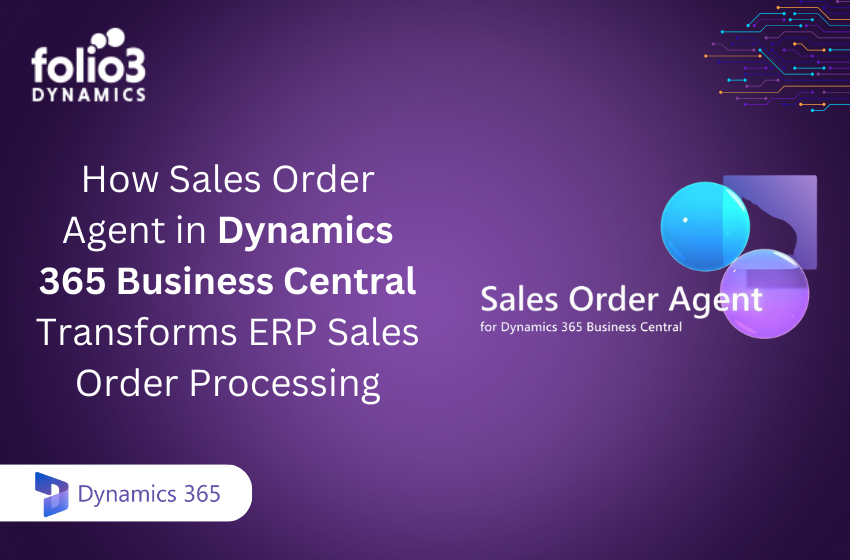Online shopping, i.e., e-commerce, has experienced a major boost in the past few years. Consumers today want to shop from the comfort of their homes. Therefore, traditional businesses have experienced a major shift to e-commerce. To survive in the competitive business world, where consumerism is rising, businesses must have a strong online presence.
Companies want powerful solutions to improve consumer experiences, handle data effectively, and optimize operations. Combining BigCommerce with Microsoft Dynamics 365 Business Central is a powerful option. With several features that may completely change your organization’s processes, this integration combines the best elements of an extensive ERP system with the features of an excellent e-commerce platform.
In this blog, we will examine the key BigCommerce Business Central integration features, along with how they can benefit your company.
Key Integration Features of BigCommerce Business Central
Let us examine the major integration features of BigCommerce Business Central integration.
1. Real-time Data Synchronization
One outstanding feature of the BigCommerce Business Central integration is real-time data synchronization. This feature ensures that inventory, orders, and customer data are constantly updated simultaneously across both platforms.
Explanation
When data is synchronized in real-time, it automatically updates inventory levels, order statuses, and customer information without manual intervention.
Benefits
Real-time data synchronization leads to increased accuracy, reduced need for manual data entry, and better operational efficiency. You no longer have to worry about discrepancies between your e-commerce and ERP systems. This can save time and reduce any errors that might incur costs later on.
For example, when a customer places an order on your BigCommerce store, the inventory is automatically updated in Business Central. This rapid update ensures that you always have a precise count of available stock. This real-time update helps maintain a smooth flow of information, minimizing the chances of overselling or stockouts.
2. Automated Order Processing
Automated order processing is another important feature of the BigCommerce Business Central connection for retail businesses.
Explanation
The automated order automatically collects orders from your BigCommeatically, processes them, fulfills them, and then transfers them to Business Central without any hassles.
Benefits
Automated order processing helps you handle orders quickly, eliminate errors, and enhance customer satisfaction. The simplified process ensures that orders are processed quickly and mistake-free, leading to satisfied customers and repeat orders.
For example, when an order is placed, the system can automatically generate invoices, update inventory, and initiate shipping without any manual intervention. This not only saves time but also reduces the risk of human error, ensuring that your customers receive their orders accurately and on time.
3. Inventory Management
Effective inventory management is crucial for any e-commerce business, and the BigCommerce Business Central integration provides inventory management software.
Explanation
This dynamic feature enables you to track inventory levels at various locations in real time, ensuring that you always have precise, clear, and updated knowledge of your stock levels.
Benefits
If stockouts and overstocking are avoided, you can better plan your inventory, leading to cost savings and improved customer trust. Better inventory planning means fulfilling customer demand without overburdening your storage areas.
In addition, advanced inventory tracking solutions can help you predict demand more accurately, reducing the risk of extra inventory.
For example, you can set reorder levels and safety stock levels within Business Central, ensuring that you never run out of the most in-demand products.
4. Financial Management
Merging your sales data with financial management system is essential for correct reporting and financial management.
Explanation
The BigCommerce Business Central integration merges your sales data with the financial management system in Business Central.
Benefits
This integration simplifies the accounting processes. The software then provides better financial information and ensures that your financial reports are accurate and up-to-date. It simplifies tasks such as reconciling sales data, tracking expenses, and generating financial statements. With the help of integrated financial management, you can make intelligent decisions about your finances based on real-time financial data. Thus leading to better business performance.
For example, automated financial reporting can help you promptly gauge the profitability of different product lines and identify areas where you can save costs.
5. Customer Management
A collective view of customer data is crucial to providing excellent customer service and personalized marketing strategies.
Explanation
The merger of customer information and history from Business Central and BigCommerce empowers you to see a complete picture of every client.
Benefits
With a consolidated customer view, it is possible to deliver improved customer service and personalized marketing. You can comprehend your customers’ preferences, purchase history, and behavior. Thus allowing you to personalize your marketing strategies effectively.
To improve engagement and conversion rates, you may divide your customer base into several segments and develop marketing campaigns that connect to them. If your support team has a full picture of all client interactions, they can respond to questions more quickly and give a better, personalized experience.
6. Product Information Management
A reputable and reliable online presence depends on accurate and consistent product information across every platform.
Explanation
The BigCommerce Business Central integration guarantees that product details, descriptions, and images are the same across both systems.
Benefits
This integration results in consistent product information across platforms, making product management easier, efficient, and highly reliable. Correct product information helps build customer trust and boosts their shopping experience on your e-commerce site. With the help of integrated product information management, you can easily update product details, manage pricing, and ensure that your product listings are always current and accurate.
Consistency is fundamental to maintaining brand integrity and guaranteeing that consumers get the same product information wherever they interact with your business.
BigCommerce Business Central Implementation Process
Although implementing the BigCommerce Business Central integration might appear challenging, a systematic approach can simplify it. Follow the steps below to implement the BigCommerce Business Central integration.
1. Planning
Begin by analyzing your business requirements and setting clear goals for the integration. Clearly understand your goals and targets, such as enhanced efficiency, efficient data management, and better customer experiences.
Include the main stakeholders in the planning process to ensure that all requirements are collected and addressed. Conduct a thorough analysis of your current systems and identify any possibility that may be faced during the integration.
2. Setup
Set up the integration settings in both BigCommerce and Business Central. This consists of establishing important connections and ensuring that both teams communicate smoothly. You may need to work closely with your IT team or an integration specialist to accomplish this step. Ensure that all relevant data fields are mapped correctly and that there are no data discrepancies.
3. Data Migration
Ensure a smooth transfer of data from BigCommerce to Business Central. This step is mandatory, and you want to avoid data loss or discrepancies during the integration process. Plan your data migration methodically, and consider performing a pilot migration to spot and address any possible issues. It is important to back up your data before migration to prevent the loss of valuable data.
4. Testing
Conduct in-depth testing to ensure that the expected outcomes are being delivered. And every module is working as expected. This includes testing data synchronization, order processing, and other major features to identify and solve any problems beforehand. Develop a detailed testing plan that encompasses all aspects of the integration and involve end-users in the testing process to ensure that the system meets their requirements.
Testing should also include performance checks to ensure the integrated system can handle peak load times.
5. Go Live
Activate the integrated system and carefully monitor its functionality. Verify that every procedure is operating as intended and make any required changes. Provide continuous support to help with any problems that may come up during the integration’s early stages. To find opportunities for improvement, evaluate the system’s performance on a regular basis and get feedback from users.
Integration Best Practices
Following integration best practices helps you achieve high data accuracy, fewer mistakes, and overall efficiency. It also minimizes delays and downtime, boosting total productivity. Therefore, let us examine the best practices to adhere to while integrating BigCommerce Business Central:
1. Regular Updates
Ensure the integration software is updated to utilize the latest features and security enhancements. Frequent updates guarantee that your integration works well and is compatible with both systems. Plan regular maintenance periods so that you may upgrade and evaluate the system. Maintaining up-to-date updates also makes it easier to take advantage of new features that can help you improve your business operations.
2. Data Accuracy
Regularly audit your data to ensure its accuracy. This consists of checking for discrepancies, correcting errors, and maintaining consistent data quality across both systems.
Apply automated data validation checks to quickly identify and handle data quality issues. Accurate data is crucial for making informed business decisions and maintaining customer trust.
3. Training
Provide adequate training and support to enable and equip the staff with the features of the integrated system. Well-trained employees can reap the maximum benefits of the integration features and ensure smooth operations. Provide ongoing training and support to keep your team up-to-date with the latest features and best practices. Regular training sessions and refresher courses can help your team stay proficient in using the system.
Conclusion
Integrating BigCommerce with Microsoft Dynamics 365 Business Central provides a bundle of features that can immensely boost your business, from real-time data synchronization and automated order processing to complete inventory and financial management. This integration gives an easy and efficient way to manage your e-commerce and ERP systems. You can ensure a smooth and successful integration by following best practices and a step-wise implementation process.
This integration is not merely a technical upgrade; in fact, it’s a long-term decision to enhance your business efficiency, accuracy, and customer satisfaction. Make the most of these powerful integration features and stay ahead in the competitive e-commerce landscape.
Don’t miss out on the opportunity to organize your operations, enhance your customer satisfaction, and boost your business with this powerful integration.


